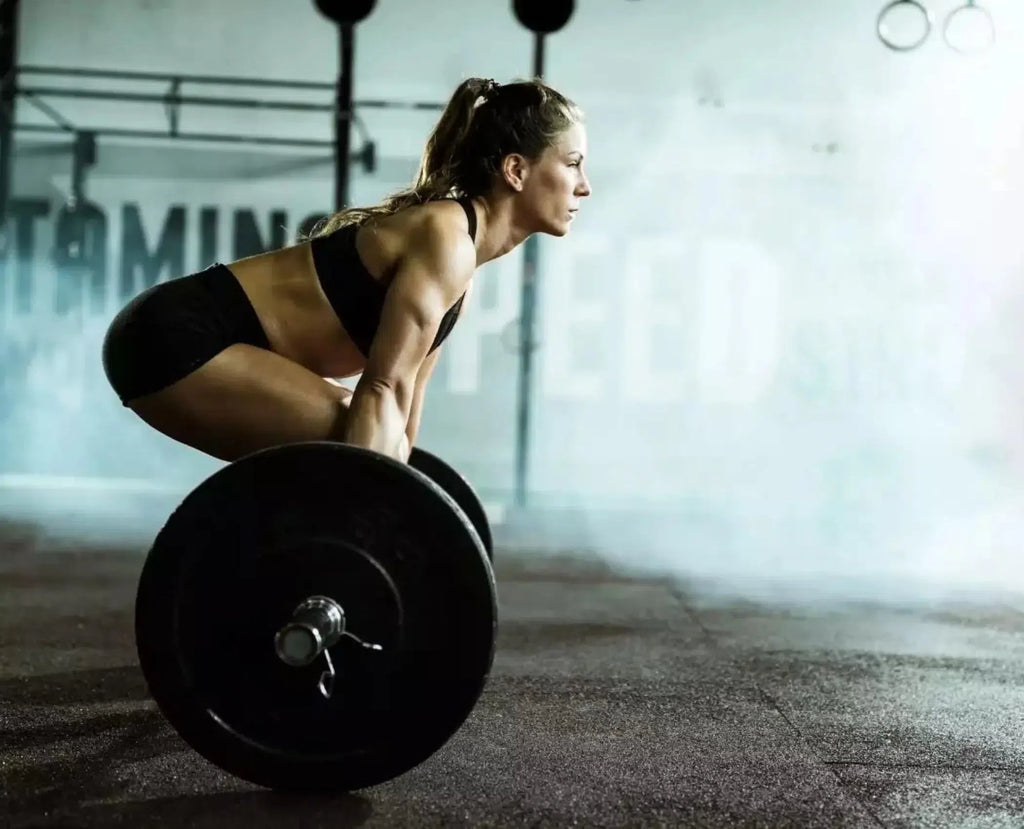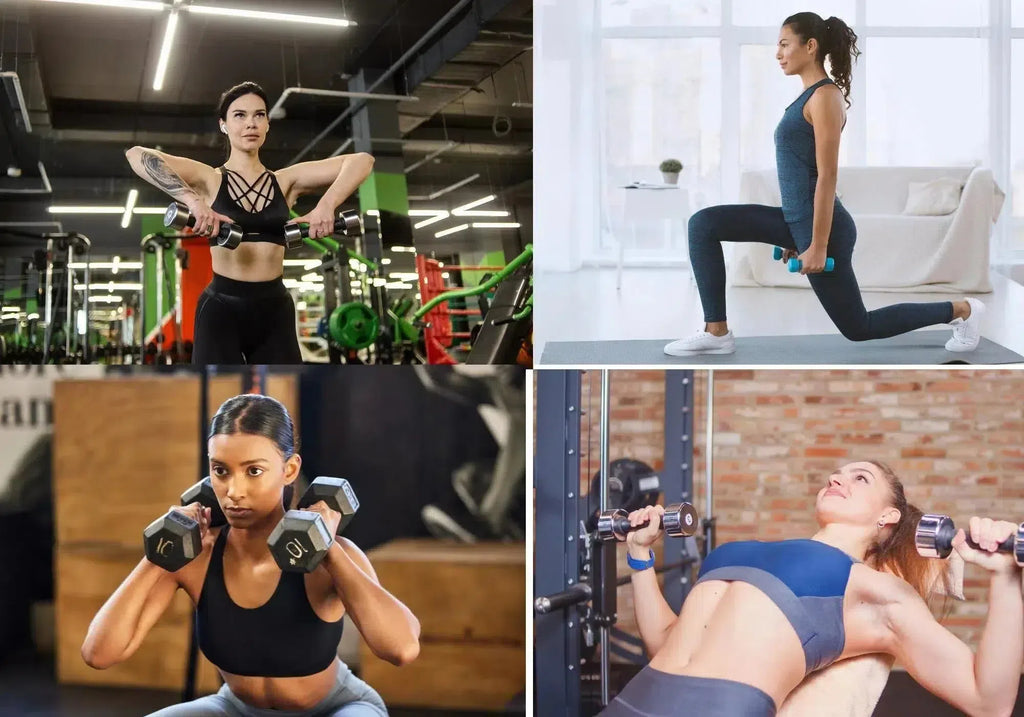A Woman's Beginner Weight Lifting Routine

Embarking on a weightlifting routine as a beginner might seem daunting, but it's an empowering and achievable journey for women of all fitness levels.
This comprehensive guide is designed to demystify the process of weightlifting for women, providing step-by-step instructions, practical tips, and beginner-friendly routines.
Discover how weightlifting can be a transformative experience, enhancing physical strength, boosting confidence, and contributing to overall health.
Whether new to fitness or looking to diversify your workout regimen, this guide is your starting point for a rewarding weightlifting journey.
Essential Components of a Successful Weight Lifting Routine for Female Beginners
| Component | Description |
|---|---|
| Warm-Up | Prepares the muscles for the workout, reducing the risk of injury. |
| Weight Lifting Exercises | Includes exercises like squats, dumbbell bench presses, and dumbbell rows. |
| Nutrition | A balanced intake of protein, carbohydrates, and healthy fats is essential for fueling workouts and aiding muscle recovery. |
| Rest and Recovery | Includes adequate sleep and rest days for muscle repair and growth. |
| Avoiding Common Mistakes | Including starting light and progressing gradually, prioritizing form over weight, not skipping warm-ups or cool-downs, and eating enough. |
The Basics of Weight Lifting
Before you start your first weight lifting routine, it's essential to understand the basics of weight lifting.
This isn't just about knowing which exercises to do - it's about understanding how to do them correctly to maximize your results and minimize your risk of injury.
For example, when doing a squat, you should keep your chest up, your back straight, and your knees in line with your toes.
This helps to work your leg muscles effectively and protects your back and knees from injury.

Next, let's talk about some common weightlifting terms.
Here are a few you might come across:
- Rep (Repetition) : This refers to the number of times you perform a specific exercise. For example, if you do 10 squats, that's 10 reps.
- Set : This is a group of reps. If you do 10 squats, rest, then do another 10 squats, that's 2 sets of 10 reps.
- PR (Personal Record) : This is the heaviest weight you've ever lifted for a specific exercise.
- Compound Exercises : These exercises work for multiple muscle groups at once, like squats or deadlifts.
- Isolation Exercises : These exercises target a single muscle group, like bicep curls.
Understanding these basics will give you a solid foundation to start your weight-lifting journey.
But remember, everyone has to start somewhere, and it's okay to ask questions and seek help if you're unsure.
Most importantly, you're taking the first step towards a stronger, healthier you!
To further understand the importance of proper form and technique, you can refer to this study on the effects of strength training on physical function.
It highlights how strength training, when done correctly, can improve physical function and prevent falls, especially in older adults.
Benefits of Weight Lifting for Women
When it comes to a weightlifting routine for beginner females , the benefits extend far beyond just building muscle.
Weightlifting can bring about a host of physical, mental, and long-term health benefits that can significantly improve your quality of life.
Physical Benefits
Weightlifting offers numerous physical benefits, including:
- Increased Strength : Lifting weights increases muscle strength and endurance, making everyday tasks easier.
- Improved Muscle Tone : Regular weight lifting can help you achieve a more toned and sculpted physique.
- Enhanced Bone Health : Weight lifting increases bone density, reducing the risk of osteoporosis.
- Better Range of Motion : Regular weight lifting can improve flexibility and range of motion, leading to better overall physical function.

Mental Benefits
The mental benefits of weightlifting are equally impressive:
- Boosted Confidence : Seeing progress in your strength and physique can significantly boost your self-confidence.
- Stress Relief : Exercise, including weight lifting, is a great stress reliever. It can help you manage stress and improve your mood.
Long-Term Health Benefits
In addition to the immediate physical and mental benefits, weightlifting also offers long-term health benefits:
- Improved Metabolism : Regular weight lifting can increase your resting metabolic rate, helping you burn more calories even when you're not exercising.
- Better Heart Health : Weight lifting can improve cardiovascular health by reducing blood pressure and lowering bad cholesterol levels.

A weightlifting routine for beginner females can bring about a host of benefits, making it a worthwhile addition to your fitness journey.
So why wait?
Start lifting and start reaping these benefits today!
Step-by-Step Guide to a Woman's Beginner Weight-Lifting Routine
Here's a detailed, step-by-step guide to a beginner's weight-lifting routine:
1) Warm-Up (5-10 minutes)
Start with a quick warm-up to prepare your muscles for the workout. This could be a brisk walk, a light jog, or some dynamic stretches.
Warming up is crucial to prevent injuries and maximize your performance.
2) Dumbbell Front Squats (3 sets of 10 reps)
Squats are a fantastic compound exercise that works your quads, hamstrings, and glutes.
Stand with your feet shoulder-width apart, lower your body as if sitting back into a chair, then push back up to the starting position.
Remember to keep your back straight and your knees in line with your toes.
3) Dumbbell Bench Press (3 sets of 10 reps)
The dumbbell bench press targets your chest and triceps.
Lie on a bench with a dumbbell in each hand, then push the weights up until your arms are fully extended.
Lower the weights back down until your elbows are slightly below your shoulders, then repeat.
4) Dumbbell Rows (3 sets of 10 reps)
Dumbbell rows work your back and biceps.
Stand with a dumbbell in each hand, bend over at the waist, then pull the weights up towards your chest, keeping your elbows close to your body.
5) Dumbbell Lunges (3 sets of 10 reps)
Dumbbell lunges are great for working your quads, hamstrings, and glutes.
Stand with your feet hip-width apart, take a step forward with one foot, then lower your body until your front knee is at a 90-degree angle.
Push back up to the starting position, then repeat with the other leg.
6) Cool Down (5-10 minutes)
Finish your workout with a cool-down to help your muscles recover.
This could be some light stretching or a slow walk.
Tips for Progression and Increasing Weight Safely
As you gain strength and confidence in your exercises, consider gradually increasing your weight.
A controlled randomized trial, as published in the Journal of Clinical Endocrinology & Metabolism, highlights the importance of progression in resistance training for young women.
Here are some safe weight progression tips:
- Listen to Your Body : If you can do more than 10 reps without feeling fatigued, it might be time to increase the weight. However, if you're struggling to complete your reps, it's okay to stick with or decrease the current weight.
- Increase Gradually : When increasing weight, do so gradually. A small increase can make a big difference.
- Maintain Proper Form : As you lift heavier weights, it's crucial to maintain proper form. If you find your form slipping, it's a sign that the weight might be too heavy.
Remember, the goal of this weightlifting routine for beginner females is not just to get stronger but to do so in a safe and sustainable way.
So take your time, listen to your body, and enjoy the journey to a stronger, healthier you!

Common Mistakes and How to Avoid Them
As you embark on your weightlifting routine for beginners female , it's crucial to be aware of common pitfalls.
Understanding these mistakes can help you avoid them, ensuring a safer and more effective weight-lifting journey.
Common Mistakes Beginners Make
Here are some common mistakes beginners often make when starting a weightlifting routine:
- Lifting Too Heavy, Too Soon : Beginners often want to see quick progress and lift heavy weights too soon. This can lead to poor form and potential injuries.
- Neglecting Proper Form : Proper form is essential in weight lifting. Neglecting it can lead to ineffective workouts and an increased risk of injury.
- Skipping the Warm-Up or Cool-Down : Both the warm-up and cool-down are vital parts of a workout. Skipping them can lead to reduced performance and increased risk of injury.
Tips and Advice on How to Avoid These Mistakes
Now that we know the common mistakes, here are some tips by personal trainers on how to avoid them:
- Start Light and Progress Gradually : Begin with weights you can lift comfortably for the recommended reps. As you get stronger, gradually increase your weight.
- Prioritize Form Over Weight : Always prioritize proper form over lifting heavier weights. Lifting lighter weights with good form is better than heavier weights with poor form.
- Don't Skip the Warm-Up or Cool-Down : Include a warm-up and cool-down in your workout routine. They help prepare your body for the workout and aid in recovery afterward.
Remember, everyone makes mistakes when they're learning something new.
The key is to learn from these mistakes and keep improving. Happy lifting!
Nutrition and Recovery
Embarking on a weight-lifting routine for beginners female is not just about the workouts.
It's also about fueling your body with the right nutrients and giving it the rest it needs to recover and grow stronger.
Nutrition for Weight Lifting
Nutrition plays a pivotal role in your weight-lifting journey.
It provides the energy for your workouts and the building blocks for muscle repair and growth.

Here's a simple guide to nutrition for weight lifting:
- Protein : Protein is crucial for muscle repair and growth. Aim for a source of protein in every meal. This could be lean meats, fish, eggs, or plant-based proteins like beans and lentils.
- Carbohydrates : Carbohydrates fuel your workouts. Include whole grains, fruits, and vegetables in your diet for a steady energy supply.
- Healthy Fats : Fats are essential for hormone production and provide a concentrated source of energy. Include healthy fats like avocados, nuts, and seeds in your diet.
Recovery in Weight Lifting
Recovery is when your body repairs and builds muscle, and it's just as important as the workouts themselves.
Here are some tips for effective recovery:
- Sleep : Aim for 7-9 hours of sleep per night. Sleep is when a lot of muscle repair and growth happens.
- Rest Days : Include rest days in your routine. This gives your muscles time to recover and grow.
- Active Recovery : Consider light activities like walking or stretching on rest days. This promotes blood flow and aids in recovery.
When it comes to recovery, compared to men, women are able to handle more training volume and face lower post-exercise muscle damage due to the presence of estrogen .
A successful weightlifting routine for beginners female is not just about the workouts. It's also about nourishing your body and giving it the rest it needs.
So, eat well, rest well, and lift well!
FAQs
How many days a week should a female weight train?
A good starting point for beginners to weight train is two to three days a week.
This allows ample time for rest and recovery, which is crucial for muscle growth and preventing overtraining.
Is it OK for a woman to lift weights every day?
While lifting weights every day is possible, it's not typically recommended, especially for beginners. Your muscles need time to rest and recover after a workout.
Without adequate recovery time, you risk overtraining, which can lead to injuries and hinder your progress.
Can women expect the same muscle growth as men?
No. Women tend to naturally grow less muscle mass than men due to lower testosterone levels.
How much weight should a female beginner lift?
The weight a female beginner should lift depends on the individual and the exercise.
A good rule of thumb is to start with a weight you can lift for 10-15 reps with good form. The last few reps should feel challenging but not impossible.
As you get stronger, you can gradually increase your weight.

Conclusion
In summary, this guide has equipped you with the essentials of a beginner's weightlifting routine, emphasizing technique, benefits, and safety.
For a practical start, consider checking out our adjustable dumbbells, designed to support your weightlifting journey.
Remember, it's not just about physical strength; it's about empowering yourself and embracing a healthier lifestyle.
Begin your transformative journey with the right tools and mindset.
Your path to strength and confidence starts here!
References
- Effects of Strength Training on Physical Function. (2009). Retrieved from:
https://pubmed.ncbi.nlm.nih.gov/19910811/ - Effects of Endurance and Resistance Training on Total Daily Energy Expenditure in Young Women: A Controlled Randomized Trial. Retrieved from: https://journals.physiology.org/doi/abs/10.1152/jappl.1994.76.1.133
- Difference in skeletal muscle function in males vs. females: role of estrogen receptor-β. Retrieved from:
https://journals.physiology.org/doi/full/10.1152/ajpendo.00098.2004 - Gender differences in strength and muscle fiber characteristics (1993)
Retrieved from: https://pubmed.ncbi.nlm.nih.gov/8477683/





Leave a comment